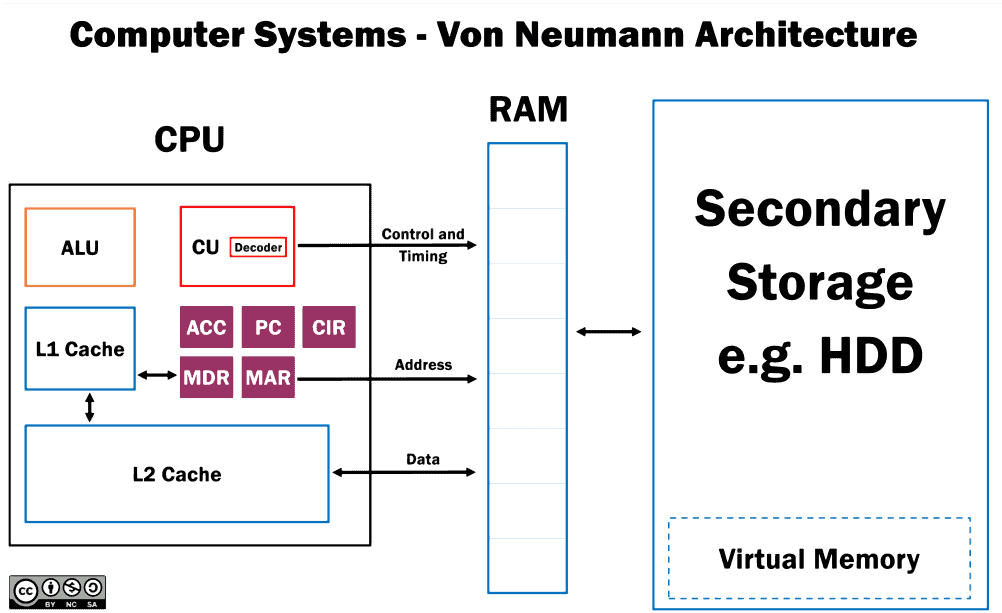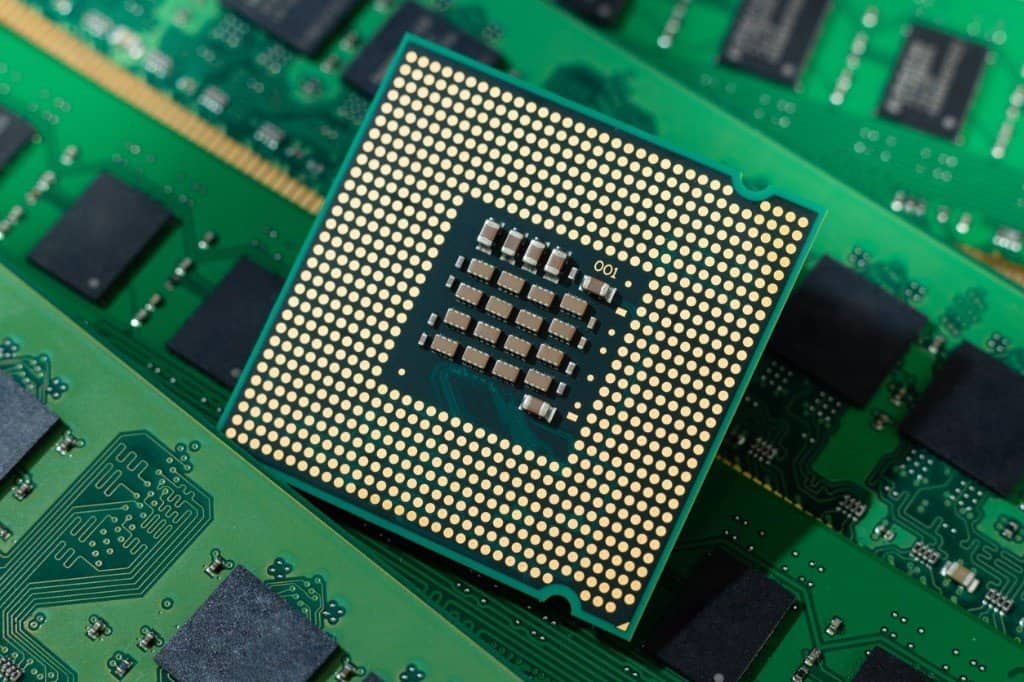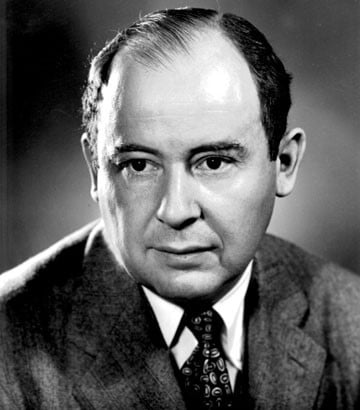Key Points:
- Originally, Von Neuman Architecture referred to the specific proposed architecture for a computer as stated by John von Neumann in 1945.
- Von Neuman Architecture came to refer to computers whose data operations and instrument fetch processes can occur simultaneously.
- Von Neuman Architecture made computers less expensive (the same equipment could be used for multiple tasks, thus requiring fewer parts), and much faster and more efficient.

A poster showing the basics of the Von Newmann Architecture. When implemented, computers that were designed with a Von Neumann Architecture were able to be modified and programmed via the input of instructions in computer code.
What is Von Neumann Architecture: Complete Explanation
Von Neumann Architecture helped to set the stage for modern computing because of the fundamental way it proposed rewriting computers. As they were first designed, computers were not anything remotely resembling what we would consider a computer today. Early computers were designed to complete specific tasks and fulfill certain functions, like math. Their programming was hard-wired into their design, meaning that “reprogramming” a computer simply wasn’t possible: Instead, computers would have to be physically disassembled and redesigned.
According to Von Neumann’s notes, the original architecture was first sketched out as a diagram. This diagram operated as a flow chart that showed how data would be inputted, programmed, and stored. Indeed, this diagram was not particularly different than the flow charts that were previously used by programmers when they created computers. The difference is that, when implemented, the Von Neumann architecture could be used for multiple purposes.
This changed as a result of the Von Neumann model. When implemented, computers that were designed with a Von Neumann Architecture were able to be modified and programmed via the input of instructions in computer code. This allowed for the functioning of computers to be rewritten based on the development of programming language. Furthermore, data could be stored, retrieved, and made available via the appropriate use of an input device that would modify information stored within a device’s Central Processing Unit, and then displayed on its output device.
Von Neumann Architecture: An Exact Definition
The definition of Von Neuman Architecture originally referred to the specific proposed architecture of a computer’s architecture, as written by John von Neumann in 1945. The definition has since evolved to refer to specific types of computers. One of the primary characteristics of these computers is that their data operations and instrument fetch processes can occur at the same time – something that was previously impossible until the implementation of the Von Neumann Architecture.
How Does Von Neumann Architecture Work?

The idea of Von Neumann Architecture is actually a relatively simple one to understand, and it could be broken down into roughly a few parts. The key characteristics include:
Input Device
An input device is literally a device that is used to input commands, data, or instructions into a computer. A keyboard is the most common example, but it can also include a mouse, trackball, microphone, camera, or more.
Central Processing Unit
The Central Processing Unit, or CPU, consists of three components: The control unit, the Arithmetic/Logic Unit, and the Registers. The CPU would then interact with the memory unit.
Control Unit
The control unit operates as its name would imply, controlling logic units and providing the instructions by which these logic units would respond to program instructions. It would also give instructions on how other components should interact.
Arithmetic/Logic Unit
This unit was specifically responsible for arithmetic and logic commands, controlling how these operations would work.
Registers
Registers allowed for data to be stored before it could be processed. There were five types of registers that would store data: Memory Address Register, Accumulator, Memory Data Register, Program Counter, and Current Instruction Register. Different data types would be stored in these different registers.
Memory Unit
The Memory Unit can be accessed by the CPU. Data can be loaded into and out of the memory unit, allowing for easy storage and access.
Output Device
Output devices are the devices that are ultimately utilized when a computer program is complete. Monitors and printers are the most common examples, but speakers would also be an output device.
Who Created Von Neumann Architecture?
As the name would imply, the term Von Neumann Architecture was created by John Von Neumann. Von Neumann was a Jewish computer scientist who escaped the Nazi regime in Europe. Von Neumann worked with a variety of computer scientists and first met Alan Turing in the mid-1930s, during which he became familiar with Turing’s ideas of inventing a computer that could be used for storage. As a biography of Von Neumann notes, this interaction would inspire the Architecture.
After working on a variety of projects — including the Manhattan Project – Von Neumann first came across the ENAIC. The ENAIC was one of the world’s first programmable computers and was capable of executing multiple tasks. It was also fully programable, meaning that, unlike more common computers at the time, it could complete multiple tasks.
While working at the Moore School of Engineering in Philadelphia, Von Neumann first wrote a report on the proposed digital design of computers. In this report, Von Neumann lays out the first model for these computers. This model would propose how computers should operate in order to be programmable and reprogrammable.
This Architecture is also known as the Princeton Architecture because of Von Neumann’s affiliation with Princeton.

.
What Are The Applications of Von Neumann Architecture?
Simply put, Von Neumann architecture is still largely relevant in computers today. This is for many reasons. First, it makes computers less expensive, as the same equipment can be used for multiple tasks, thus requiring fewer parts. It also makes computers significantly faster and more efficient.
Of course, the design for this architecture has evolved significantly since Von Neumann first developed it. Examples of this evolution include faster and smaller parts and combined buses for input and output. All of these innovations made faster computers more possible.
Examples of Von Neumann Architecture in the Real World
Examples of this Architecture remain highly relevant and present in the real world today. It was also used in many of the world’s first large computers, including the ARC2, Manchester Baby, and EDSAC. Indeed, an entire slew of these early computers took advantage of the Von Neumann Architecture, as this computer architecture was essentially the main form that computers used in their early days.
Von Neumann Architecture vs. Harvard Architecture
Other forms of computer architecture have been developed besides the Von Neumann model. Notes about the Harvard architecture demonstrate more of a hub and spoke model, with the control unit at the center. ALU, Instruction Memory, Data Memory, and Input/Output devices all flow into the control unit.
On one hand, both forms of architecture set ways by which computers can process data and information. Both architectures operate with the control unit at their centers and have a memory that feeds into and interacts with the control unit.
The primary difference is that this Architecture uses a Single Use, Single Data (SISD) pathway for memory and programming. The Harvard Architecture used separate pathways. Data is also stored differently.
The image featured at the top of this post is ©Daniel Barbutti/Shutterstock.com.

